Did You Know?
Red Fort in Muzaffarabad is naturally fortified on three sides by the U-shaped Neelum River, enhancing its defensive capabilities
34°22'56.7"N 73°27'54.1"E
Red Fort in Muzaffarabad is naturally fortified on three sides by the U-shaped Neelum River, enhancing its defensive capabilities
The Best Time to Visit Azad Kashmir Region is Summers. Preferably from April to September. Winters are Extremely Cold and Snowfall blocks most of access. Hence Winters are not recommended.

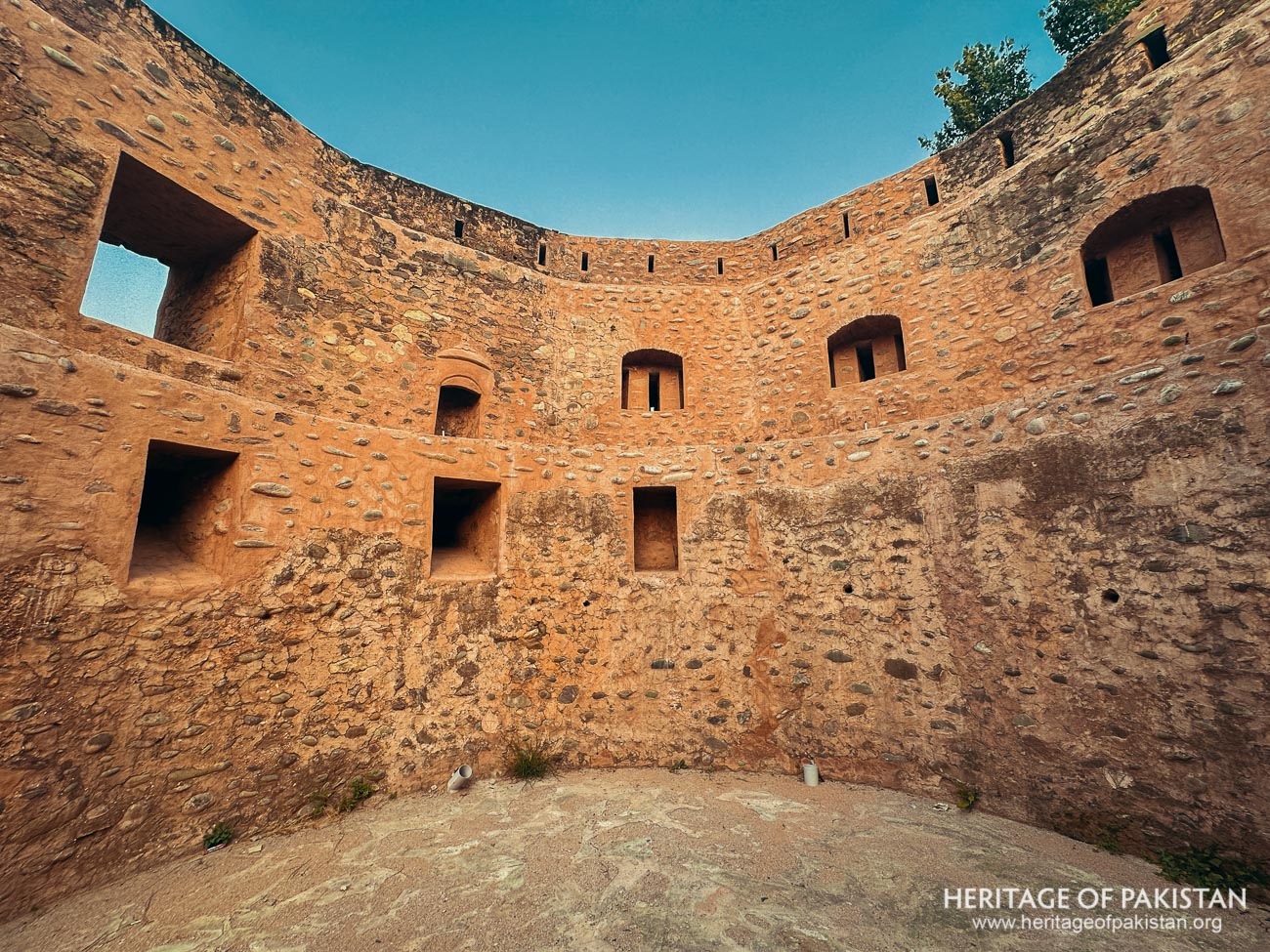
The Red Fort, also known as "Rutta Qila," is a medieval fort situated in Muzaffarabad, Azad Kashmir, and spans over an area of 60,000 square feet. It retained strategic military importance because of Muzaffarabad's location as a gateway into the larger Kashmir region. Historically, Muzaffarabad was a vital military outpost, especially during the 16th century when the region was under the rule of the Chak Dynasty. The Chaks ruled Kashmir from 1554 to 1582, during a time of heightened tension with the expanding Mughal Empire. Faced with frequent military conflicts, the Chak rulers recognized the need for a fortress in the region to defend against Mughal incursions.
In 1559, the Chak rulers established the Red Fort as a defensive measure in its initial form. The fort was designed to serve as a second line of defense and provide additional protection to Fateh Garh Fort, located to the west of Muzaffarabad in a region then known as Chakri Bahak, (Cross Meadow). The strategic positioning of the fort at Muzaffarabad played a crucial role in regional defense efforts. However, the Chaks were defeated, and the Mughal Empire, under the leadership of Emperor Akbar the Great, successfully annexed Kashmir in 1586.
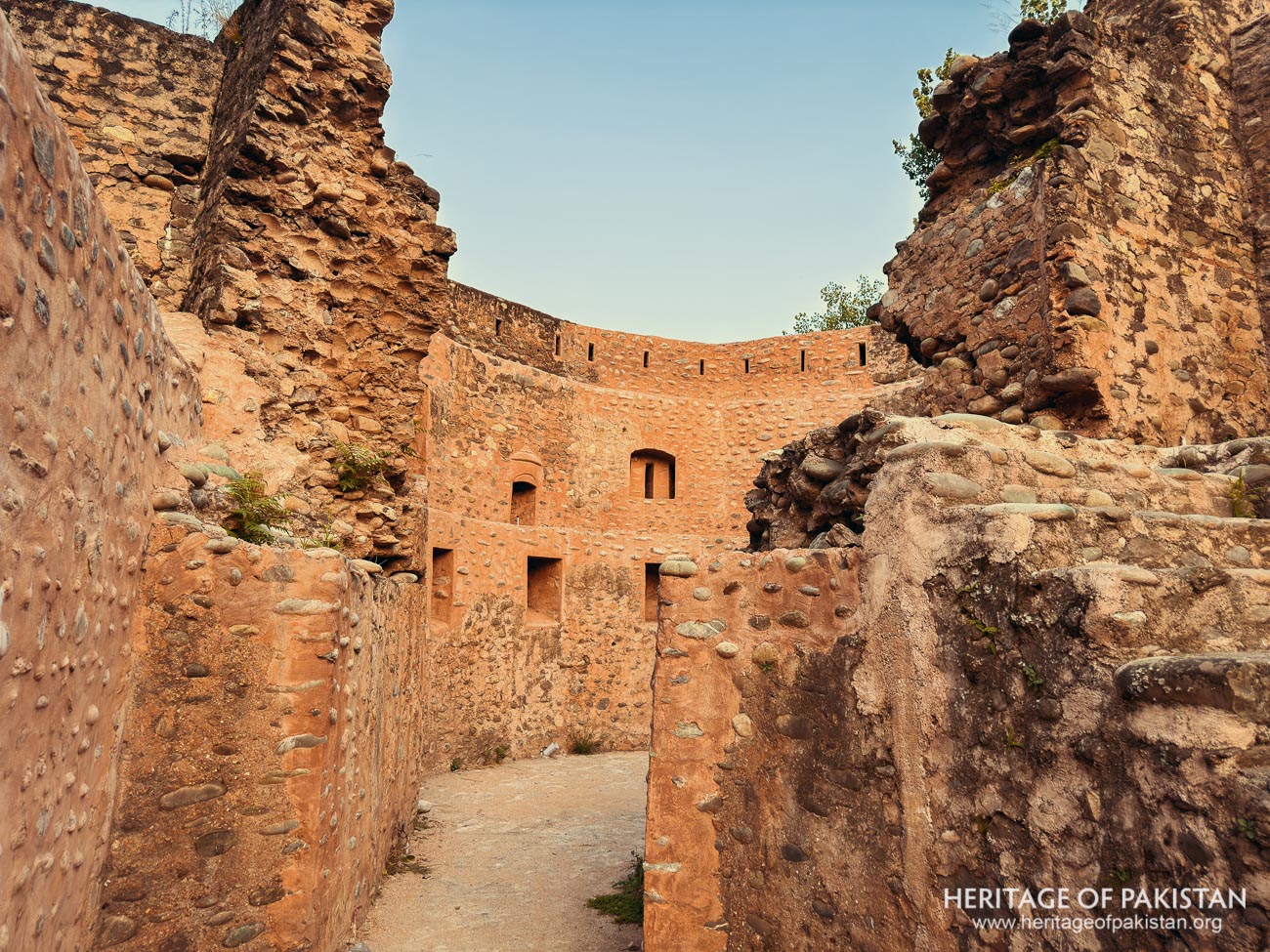
Following the annexation, the Red Fort came under Mughal control. In 1592, Akbar visited Kashmir and preferred traveling through the Muzaffarabad region on his way back to the capital, as it was the most convenient route. During this visit, Akbar stayed in Muzaffarabad for a week. Recognizing the importance of the region, a sarai (inn) was constructed in 1597 to accommodate the emperor on future visits. The sarai, named “Saraa-e Akbari,” was built by Ali Mardan Khan, the Governor of Kashmir. However, despite the initial attention given to the fort during Akbar’s reign, the fort gradually lost its significance under subsequent Mughal rulers and was largely neglected.
The fort’s next significant phase of development came in 1646 under Sultan Muzaffar Khan, a ruler from the Bamba Dynasty. Sultan Muzaffar Khan, the founder of the city of Muzaffarabad, recognized the deteriorating state of the Red Fort and undertook major repairs and reconstruction. His efforts revitalized the fort, transforming it into a strong military base once again. The reconstruction of the fort under Muzaffar Khan’s leadership marked a turning point in its history, as the fort became a central element in the military strategy of the region.
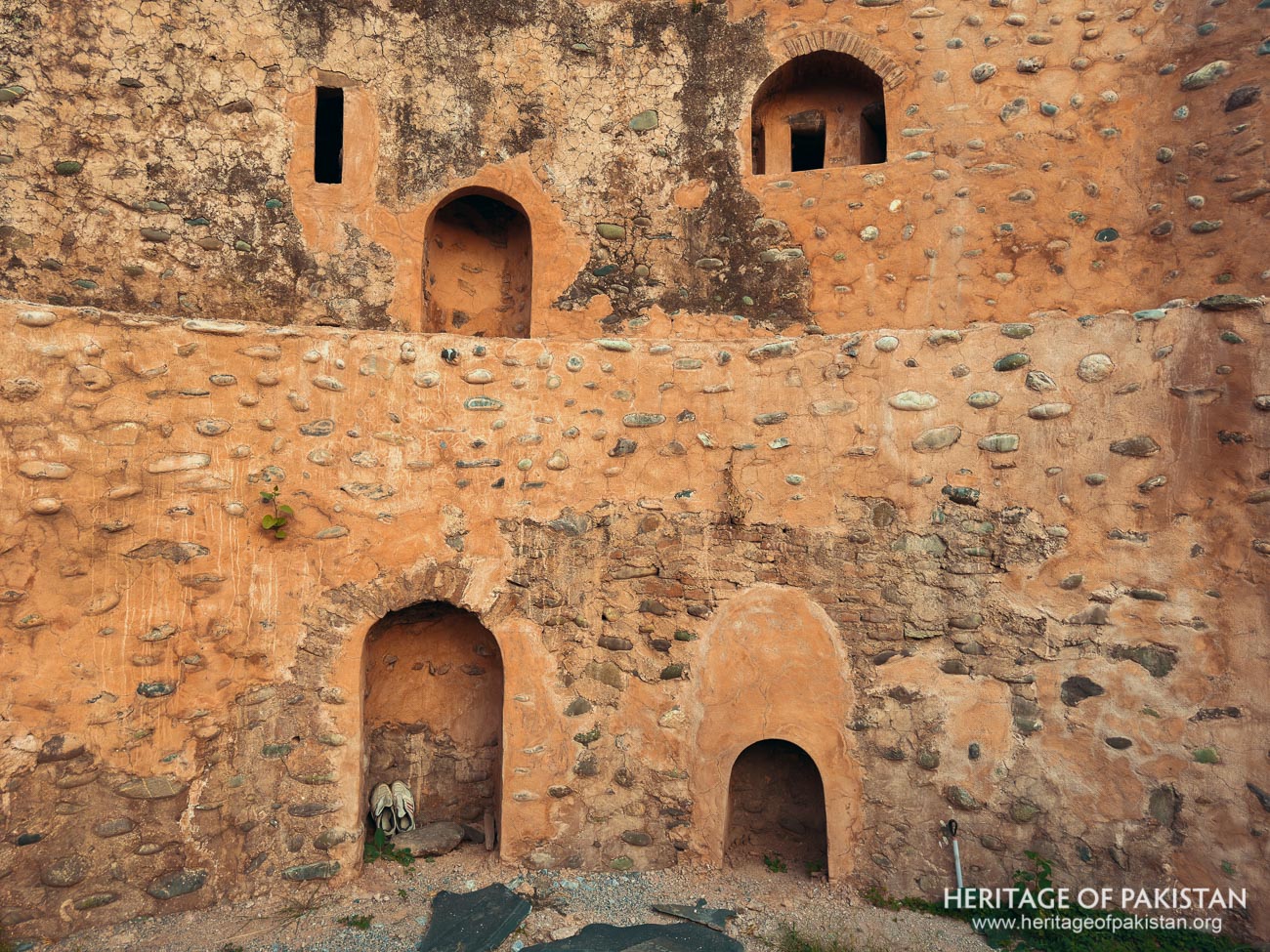
In 1846, the Dogra Dynasty, under the leadership of Maharaja Gulab Singh, took control of the fort. Recognizing its strategic importance, Maharaja Gulab Singh initiated extensive repairs and expansions of the Red Fort. The reconstruction efforts continued under his successor, Maharaja Ranbir Singh. Together, these rulers extended the fort and gave it much of the form it retains today. Under the Dogra rulers, the fort became not only a military stronghold but also a base for political operations in the region.
The Red Fort remained in active military use until 1958, when a new cantonment was established, rendering the fort obsolete for modern military needs. Subsequently, the fort was abandoned as a military base but retained its historical significance. Today, the fort is under the control of the Department of Tourism and Archaeology of the Government of Azad Kashmir, ensuring its preservation as an important cultural and historical site.
The strategic location of the Red Fort is enhanced by its proximity to the Neelum River, which enters Pakistan at Taobat and is known as the Kishanganga River in India. The river’s encirclement of the fort in a U shape enhances its defensive capabilities, making it a carefully selected site for military fortification. The northern part of the fort featured terraces with steps that lead directly to the riverbank, providing access to the Neelum river below. A pathway around the fort’s perimeter, constructed along the side of the Neelum River, allows visitors to explore the site. The city of Muzaffarabad is visible across the river from the fort in a beautiful panorama. While the fort no longer serves any military function, it remains an important cultural landmark. The Department of Tourism and Archaeology of Azad Kashmir manages the site, preserving its historical significance and ensuring that visitors can appreciate its strategic, architectural, and historical importance.
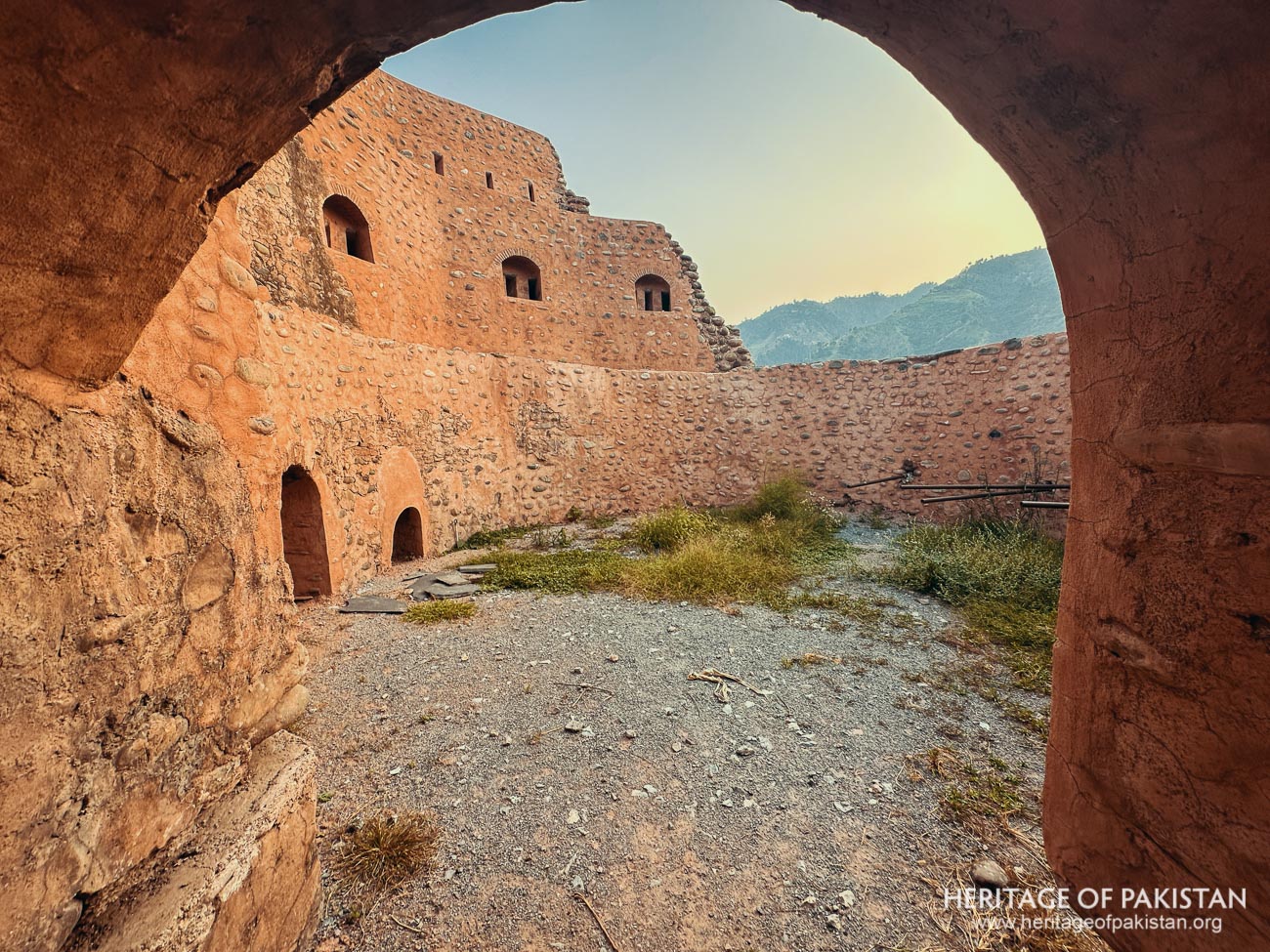
The Red Fort is a notable example of defensive architecture, strategically protected on three sides by the U-shaped Neelum River. This natural barrier enhances the fort’s defensive capabilities. The fort is designed with three distinct levels. The main gate is located on the eastern side of the upper level, while the lower level is on the northern side. In its original form, the northern part of the fort had stairs that led down to the river, providing direct access. The lower level connects to the larger upper level through an intervening middle level, ensuring a structured and multi-layered defense system.
The fort has undergone several phases of repair and reconstruction over different periods, which is reflected in the variety of materials used in its construction. While the fort's name, "Red Fort," is derived from the reddish color of the bricks and the plaster used in its structure, other materials such as rounded stones, rubble stone, and lime and clay mortar were also used.
The fort’s elongated shape spans approximately 60,000 square feet, with a length of around 600 feet and a varying width ranging from 100 to 140 feet. It is fortified by strong bastions placed at intervals along its perimeter, providing points for lookouts and defense. The entrance is located on the river side, making it more easily defensible.
The combination of natural and man-made defenses and the fort’s strategic placement make the Red Fort an impressive example of military architecture.
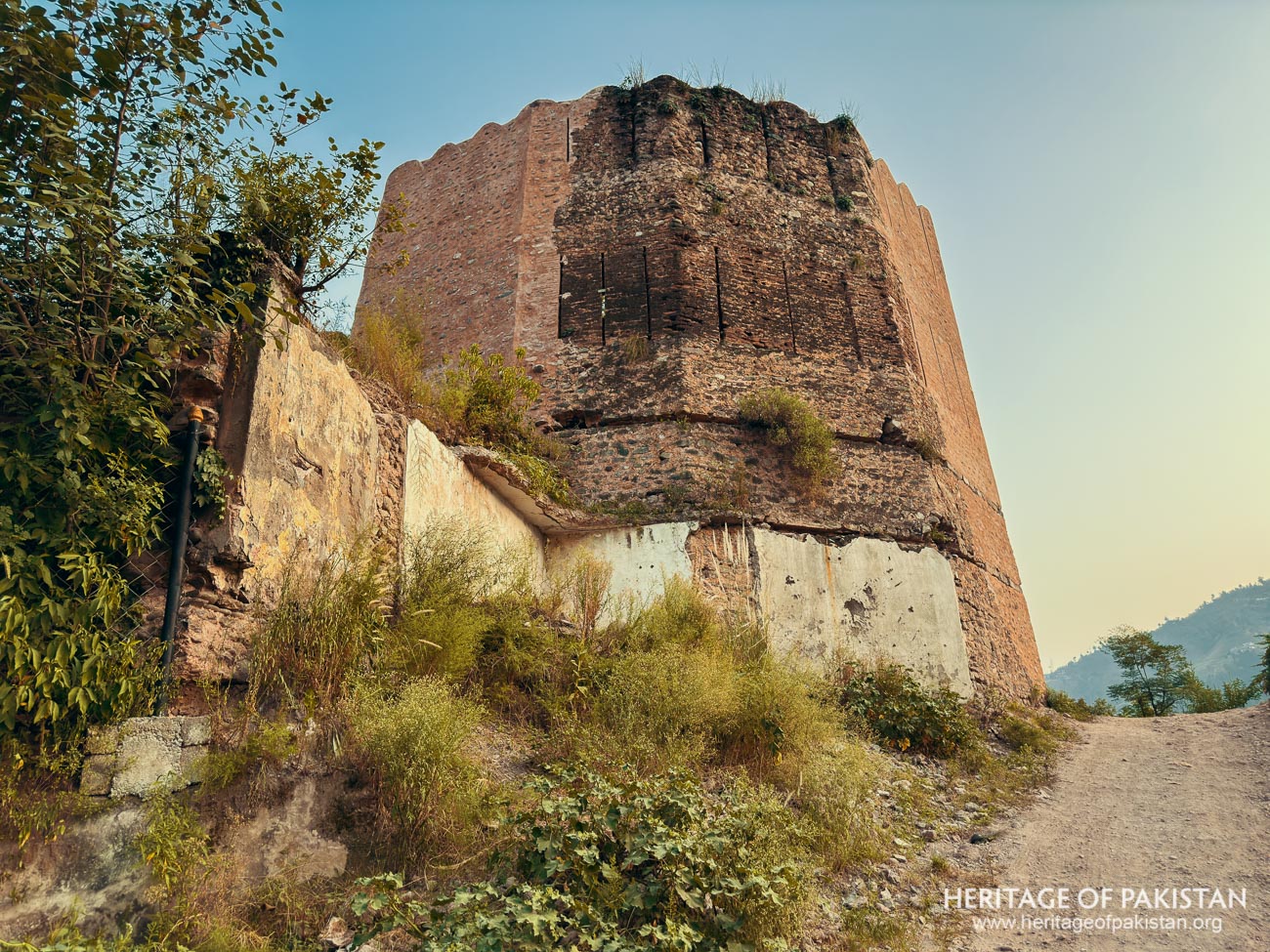
The fort was taken over by the AJK Tourism & Archaeology (AJK T&A) in 1980, which initiated its preservation. The Red Fort sustained significant damage during the 2005 earthquake. However, restoration efforts have been undertaken by the Archaeology Department to restore it to its former state.


All Photographs by Syed Noor Hussain and Sania Azhar.
All Rights Reserved. Photos may be used for Non-Commercial, Educational, Artistic, Research, Non-Profit & Academic purposes.
Commercial uses require licensing agreement.


Add a review